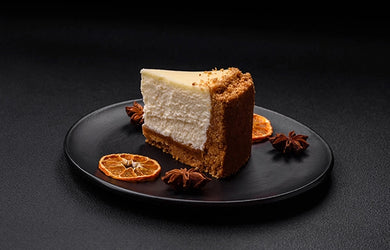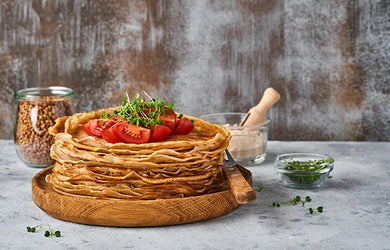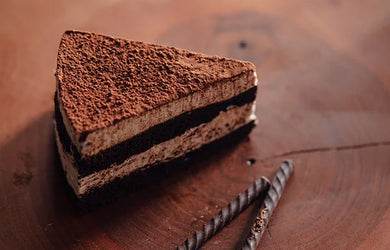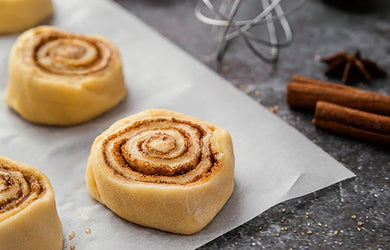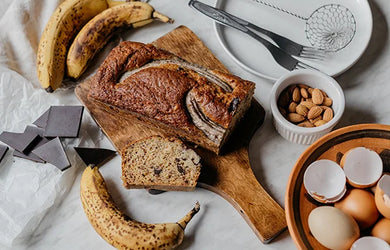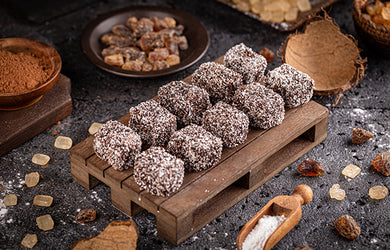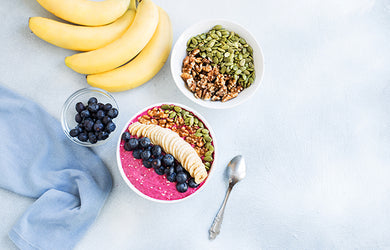the thought of cooking certain foods can trigger the flight response, and croissants are definitely one of those items. their delicate, flaky layers with buttery taste might seem like the exclusive domain of french patisseries, far beyond the reach of home bakers.
but what if we told you that you can recreate that parisian bakery experience right in your own kitchen? and you don’t have to be an experienced cook for that. with the right guidance and a bit of patience, you can easily learn how to make croissants. our easy croissants recipe provides all the details to help you transform simple ingredients into golden and flaky delight.

what is croissant?
A croissant is a delectable pastry hailing from France, renowned for its distinctive crescent shape and delicate layers crafted from yeast-risen dough. It’s meticulously made through a technique known as lamination, involving layering the dough with butter, repeated rolling, and folding to create a multitude of delicate layers. These layers contribute to its signature flaky texture.
When baked to a golden hue, the croissant boasts a crispy outer shell that gives way to a soft and airy interior. Its iconic flavour profile balances a rich buttery taste with a hint of yeast, making it a versatile base for both sweet and savory fillings.
how to make croissant
it may be tempting to scroll down and see the length of this section on “how to make croissant”, but don’t! the section is long but that’s just to simplify the croissant recipe for you. our recipe will help you go over the entire process. so, what is the process?
here's the breakdown of this easy croissant recipe:
- make the dough.
- roll out the initial rectangle.
- create the butter layer or beurrage.
- laminate the dough - wrap the butter layer within the dough.
- roll out, fold and create layers of the dough.
- repeat the rolling and folding process twice more.
- shape the croissants into triangles and roll up.
- bake them.
you might already know about laminating the dough, but we’ll still mention it here for clarity.
laminating the dough
lamination in the context of a croissant recipe refers to the process of folding butter into the dough multiple times to create thin layers. basically, the dough is rolled out and a layer of butter is added. then the dough is folded over itself several times.
with the basics in place, let’s explore the detailed croissant recipe!
Total Servings:-
6
Preparation Time:-
12 Hours 50 Minutes
Cooking Times:-
25 minutes
Nutritional Value:-
341 calories, 21g fat, 32g carbs, 6g protein
Recipe Category:-
snacks
Cuisine:-
french
equipment
- mixing bowls
- rolling pin
- plastic wrap
- tea towel
- baking paper
- baking tray
- pastry brush
- silicone baking mat (optional)
ingredients
dough:
- 25 grams butter (unsalted)
- 250 grams all-purpose flour
- 5 grams salt
- 25 grams sugar
- 5 grams active dry yeast
- 140 ml milk
butter:
- 145 grams unsalted butter, cold
egg wash:
- 1 egg
- 2 tbsp milk (or water)
below are the detailed instructions on how to make croissants at home.
instructions
start with the dough – détrempe
- keep the yeast ready: the dough must rise and develop an airy and light structure for the success of a croissant recipe. for that to happen, yeast is added to the flour mix. so, take a small bowl to make yeast and milk mixture, and let it sit for 5-10 minutes. this time is needed to activate the yeast.
- flour and butter mix: while the yeast is getting activated, gather the ingredients to make the dough – flour, butter, salt and sugar. add them to a stand mixer’s bowl (make sure it has a dough hook) and start kneading it at low speed for approximately 1 minute.
- add yeast: while the flour is being kneaded, pour the yeast mix into the blender’s bowl. now increase the kneader’s speed and continue for another 3 minutes. check the consistency of the dough – if the stickiness is too much, add a bit more flour and knead for another 2 minutes. don’t add too much flour or it’ll become dry. a good indication that the dough is ready is when it detaches from the sides of the bowl and clings to the mixing paddle.
- dough proofing: remove the dough from the mixer and place it on a lightly floured surface. gently shape the dough into a round using your hands, then transfer it to a bowl, and cover it with a tea towel and cling wrap. set it aside for approximately 45 to 90 minutes. this proofing step refers to the rising of the dough when it more than doubles in size. it’s one step closer to being ready for the croissant recipe.
- flatten the dough: after proofing dough, get it out of the bowl and place it on a lightly floured silicon baking mat. now punch it to knock the gas bubble out. then use a rolling pin and your hands to give the dough a rectangular shape of the size 18 x 26 cm. it can take some time to get this shape, as the edges tend to contract into an oval shape.
- refrigerate the dough: transfer the rectangular dough onto a baking sheet, cover it with a tea towel and plastic wrap, and place it in the refrigerator for at least 4 hours or a maximum of 8 hours.
make the butter block – beurrage
- prepare the butter layer: this is required for the lamination stage of the croissant recipe. start by folding a parchment paper to make an enclosure measuring 13 x 18 cm. place the butter inside the enclosure so it’s covered on all sides. using a rolling pin or spatula, smooth out the butter to evenly fit the enclosure. then, place it in the refrigerator for as long as your dough is refrigerated.
laminating the dough
first turn:
- place the buerrage: make sure the butter and dough have a similar resistance when you remove them from the refrigerator (it’s crucial for the success of your croissant recipe). now, place the chilled detrempe on a lightly floured surface, then position the beurrage (butter block) in the centre of the dough such that its shorter edges align with the longer edges of the dough.
- enclose the butter: fold the longer sides of the dough to meet at the centre of the butter layer and wrap it like an envelope. if the shorter edges are uneven, use a knife or pizza cutter to trim them neatly. gently pinch the edges on the open sides and seal the butter completely. before going to the next step, ensure that the laminated dough is still firm. if not, refrigerate it for 30 minutes.
- complete the 1st: keep your work surface well-floured and lay the dough on it. now roll it out into a rectangle measuring 13 x 40 cm. then fold it into thirds along the 40 cm side – fold 1/3rd of the dough towards the centre of the rectangle and then fold the remaining 3rd over the first folded section (something like a 3-panel document folder). this completes the first turn of the croissant recipe, creating a stack with 3 layers of laminated dough. if the dough has gotten warm, place it back in the refrigerator for 30-35 minutes before the next step.
second turn:
- complete the 2nd: repeat what you did in the first turn. so, roll out the dough again into a 13 x 40 cm rectangle. as before, fold it into thirds along the 40 cm side. if you haven’t refrigerated the dough after the first turn, it’s essential to do so now. but, even if you did refrigerate it earlier, do it again for 30 minutes if the dough is too soft.
third turn:
- complete the 3rd : once again, roll out the dough into a 13 x 40 cm rectangle. fold the dough lengthwise into thirds, just as you did before. that completes the lamination stage of the croissant recipe.
- refrigerate overnight: now, place the folded dough onto a prepared baking sheet, cover it with a tea towel and cling wrap, and refrigerate it for 4 hours or overnight.
final rollout:
- roll out the dough: sprinkle some more flour on the kitchen surface and place the cold dough on it, with the edge showing the folds facing you. roll out the dough to a uniform thickness of 1 cm and about 23-24 cm in width.
- refrigerate the dough: wrap the dough and refrigerate it for about 30 minutes.
- final roll out: roll up your sleeves and roll out the dough to a thickness of about 5 mm and a measurement of 23 x 30 cm. we'll now proceed to the shaping stage of our croissant recipe.
cut the dough:
- make your marks: make sure the dough has even edges. if not, trim any uneven areas with a knife by making clean cuts. along one of the longer edges, mark intervals of 10 cm. on the opposite edge, make similar 10 cm marks, ensuring they are placed halfway between the marks on the first edge.
- cut the triangles: position a ruler diagonally across the dough so that it connects the first mark on one edge to the first mark on the opposite one. using a sharp knife, carefully cut along the ruler. repeat this process for the remaining marks to create six triangles, each with two equal sides.
shape the croissants:
- roll them up: make a 1 cm cut at the centre of the shorter edge of each triangle. begin rolling from this edge, gently pulling the two corners outward to slightly widen it. continue rolling to the tip, ensuring the tip of the triangle stays centred. also, remember to roll them well, but neither too tightly nor too loosely.
- repeat the process: repeat this process with the remaining dough, carefully shaping each croissant and arranging them on a baking sheet lined with parchment paper. cover the croissants with a tea towel and cling wrap and let them rise on the kitchen counter for 2 hours.
- preheat the oven: set the temperature to 190°c and preheat at least 30 minutes before you plan on baking.
baking the croissants:
- make egg wash: create an egg wash by mixing some egg yolk and milk (or water) and apply it carefully on croissants, using a soft brush.
- place them in oven: place the homemade croissants inside the preheated oven and allow them to bake until they turn into nice golden-brown treats. it usually takes about 20 minutes to get that colour. consider rotating the baking tray halfway through baking for even browning.
- serve and enjoy: once they’re done, take them out of the oven, let them cool down a bit and enjoy.

tips for perfect croissants
making homemade croissants is undoubtedly an advanced project. but if you properly follow the easy croissant recipe and the below tips, you’ll be successful in making bakery-quality croissants.
temperature control
temperature control is crucial when working on a croissant recipe, as it ensures the butter and dough maintain the right consistency for optimal layering. keep the butter at around 16-18°c so it's cold but pliable; if it's too hard, it won't spread evenly, and if it's too soft, it will melt into the dough.
chill the dough at around 4°c if it becomes too warm during rolling and folding, as warm dough can cause the butter to seep out. work in a cool environment, ideally below 20°c. refrigerate the dough and butter between steps to maintain the perfect balance for creating those flaky layers.
rolling techniques
begin by rolling the dough of your croissant recipe into a uniform rectangle, and then use your hands to shape it at corners. that’s because dough tends to contract into an oval shape. use a lightly floured surface and rolling pin to prevent sticking but avoid over-flouring as it can toughen the dough.
roll gently and evenly, applying consistent pressure to get an even thickness. rotate the dough at 90 degrees occasionally to maintain its shape and prevent sticking. if the dough becomes warm, let it rest in the refrigerator for 30 minutes to relax the gluten. always roll from the centre outward to keep the dough even and smooth.
butter quality
choosing high-quality butter is crucial for croissant recipes. go for butter with higher fat content (around 82%) and avoid butter with lower fat content as it’s less likely to give proper layers.
ensure the butter is unsalted to control the salt content of your dough precisely. the butter should be pliable but cold, around 16-18°c, for easy layering with the dough without melting. avoid using margarine or low-fat substitutes, as they won't produce the same texture or taste.
proper resting time
resting time is vital for the success of your croissant recipe. allow the dough to rest in the refrigerator for at least 30 minutes between each rolling and folding step. this helps relax the gluten, making the dough easier to roll out and preventing it from shrinking back.
resting also ensures the butter stays firm and creates distinct layers. after shaping the homemade croissants, give them a final rise at room temperature for about 2 hours until they double in size and appear pillowy. avoid shortcuts – proper resting time enhances flavour and ensures the success of your croissant recipe.
variations and additions
chocolate croissant: (pain au chocolat) is a rectangular-shaped croissant that is made by filling a laminated dough with a bar or chips of dark chocolate. when baked, you get a flaky pastry with melted chocolate in the centre.
ham and egg croissants: can be classified as a sandwich. proceed with a standard croissant recipe to make them. then split one in half (lengthwise) and load one side with ham, egg and cheese. broil the croissant until the cheese melts.
crab and egg croissant: is made by first cooking crab meat with shallots, tomato paste, beaten egg and lemon juice on a skillet. the filling is then placed on a slice of laminated dough, rolled into a croissant shape and baked.
matcha croissants: are exactly what the name says. by mixing just the right amount of matcha into the dough of your croissant recipe, you achieve a lovely matcha flavour that perfectly complements the taste and texture of the croissants.
serving suggestions
now that you know how to make croissants, let’s explore some serving suggestions. croissants come in many varieties, so you can easily enjoy them in different ways.
firstly, remember to serve them warm for an amazing taste. they taste even better with some butter and a selection of jam like strawberry or apricot. you can also pair them with fresh fruits and whipped cream.
however, if you’re not much into sweets, try slicing them open and filling them with ham, cheese and a fried egg for a delicious breakfast sandwich. another savoury option is cheese and bacon, or even a spread of vegemite.

ways to store your leftover croissants
If your croissant recipe yields extra, it's essential to learn proper storage techniques for later enjoyment. If you plan on having them within a couple of days, they’ll be fine even at room temperature. However, for extended freshness, it's wise to tuck them into the fridge. And when you're ready to indulge, give them a few hours outside the fridge, letting them get to room temperature.
If the croissants have been stored for a bit longer, here’s a tip to make them crispy again: Fire up your oven to 170°C and lay your croissants on a baking sheet for 5-10 minutes in the oven. That’s it – now enjoy your homemade croissants!
conclusion
isn’t that an easy croissant recipe and guide? using the term "easy" with “croissant recipe” might seem contradictory, but once you understand the process and the science behind it, it gets simplified and becomes enjoyable.
this recipe offers a basic framework on how to make croissants, but you can always add different fillings and customise them. don’t worry, you won’t go wrong with the fillings, as lots of them complement the taste of croissants.
however, there’s always a chance of getting stuck in a tight spot, so we’ve included some tips to help you out. no matter what, you’ll eventually succeed with this easy croissant recipe – go for it!
faqs on croissant recipe
Q. what is the best flour for making croissants?
A. you can make excellent croissants using all-purpose flour or pastry flour. however, some croissant recipes recommend mixing 1-part all-purpose flour and 2-part pastry flour (t45) to get flaky homemade croissants. this combination helps achieve a light and flaky texture, though all-purpose flour alone also yields great results.
Q. is croissant dough just puff pastry?
A. croissant dough is not exactly the same as puff pastry. while both involve layering butter and dough, croissant dough contains yeast and comparatively more sugar. puff pastry, on the other hand, is made without yeast.
Q. how many layers is best for croissants?
A. croissant recipes differ in their suggested number of layers, but around 27 layers give excellent results. having fewer layers can affect texture, resulting in less tenderness and a chewier consistency. on the other hand, having too many layers can make the butter too thin, leading to it melting into the dough.














